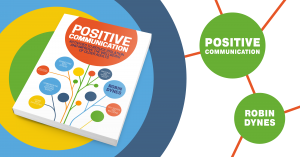Robin Dynes, author of ‘Positive Communication: Activities to reduce isolation and improve the wellbeing of older adults’ provides some tips you can use to help facilitate good interaction with older adults and create a friendly environment
-
Take any health and cultural issues into account
Age related health problems such as the onset of dementia, hearing loss, speech problems and the effects of medications can complicate understanding and the ability to communicate. Be aware of any difficulties individuals may have and take these into account. Make adjustments to any activities to allow for different mental and physical abilities. Even in today’s enlightened age many older adults, and, indeed, young people, have difficulty reading and writing. Find out all you can about the person you are supporting and adjust your communication methods to suit. This includes learning about their cultural background and what is or is not acceptable to them when communicating. For example, in some cultures it is disrespectful for younger people to make direct eye contact with an older person. In this instance it may be prudent to sit slightly to one side, keeping your eyes lowered but so the person can see your expressions, rather than facing the older person when talking.
-
Use simple direct language
Avoid complex sentences. Simple sentences are easier to understand if the person has hearing or cognitive deficits. Express complicated thoughts or instructions in short sentences. Be patient, pause briefly between sentences and allow time for the person to take in what you are saying. Be prepared to repeat what the person has missed. Literal language is easier to understand than idioms or metaphors. Express one idea and message at a time and keep them in a logical order. For example: ‘We will go for a walk now. Later, we can have tea.’ Is better than ‘We’ll have tea when we come back from our walk.’ Use direct questions: ‘Did you bake a cake this morning?’ rather than ‘What did you do this morning?’ The more precise you are, the less difficulty the person will have understanding. The challenge is to simplify your language without talking down or being patronising.
-
Speak clearly and make eye contact
Take care to articulate your words and speak clearly. Pronounce each word carefully rather than mumble or slur your speech. Look directly at the person’s face. Adjust your volume and pace, adapting it to the needs of the person. There is a temptation to shout if the person has hearing difficulties or when repeating something to emphasis what you are saying. But remember there is a difference between speaking clearly and shouting. Shouting is disrespectful and shows your impatience, speaking clearly at a suitable volume and pace shows respect.
-
Watch your non-verbal communication
Be aware of your body language. A tense, worried or impatient expression will communicate anger, impatience or frustration even when speaking in a calm voice. A calm, relaxed speaking style will help keep the focus on the conversation without making the person feel anxious. A high-pitched voice usually communicates stress and a slightly lower pitch will help you sound relaxed. Make your facial expression match the message you are communicating.
-
Be a good listener
Older people often need time to retrieve a word they are looking for or to express what they want to say. Rather than supplying words, give the person time to think of their own expression or find another way of saying what they want. Not always easy to do, especially if you are busy. Remember, nobody likes to be interrupted or have words put into their mouth. Also avoid calling attention to any verbal mistakes the person makes by correcting them. If you have understood what is being said let the wrong words pass by. Observe the person’s tone of voice, facial expression and body language to help you interpret what they are saying. Check that you have understood correctly. For example ‘Am I right in thinking that you would like ….’
-
Choose a suitable environment
Older adults often find busy environments with background noise difficult. It makes it hard to concentrate and difficult to hear what is being said. Eliminate background distractions including the radio and TV. Choose a quiet space for your activity or conversation. Make sure you have the person or group’s attention and they are not focused on completing another task.
Finally, not all older people have hearing or other communication problems. Many have very good mental and physical health and communicate without any difficulties. Use only methods which are appropriate to each situation and person.
Robin Dynes is a counsellor and freelance writer who has worked as a Social Inclusion Officer for Skills and Learning. Robin developed an outreach curriculum to meet the needs of people with disabilities, older people and other vulnerable people.
If you would like to read more articles like Robin’s and hear the latest news and offers on our books, why not join our mailing list? We can send information by email or post as you prefer. You can unsubscribe at any time.
